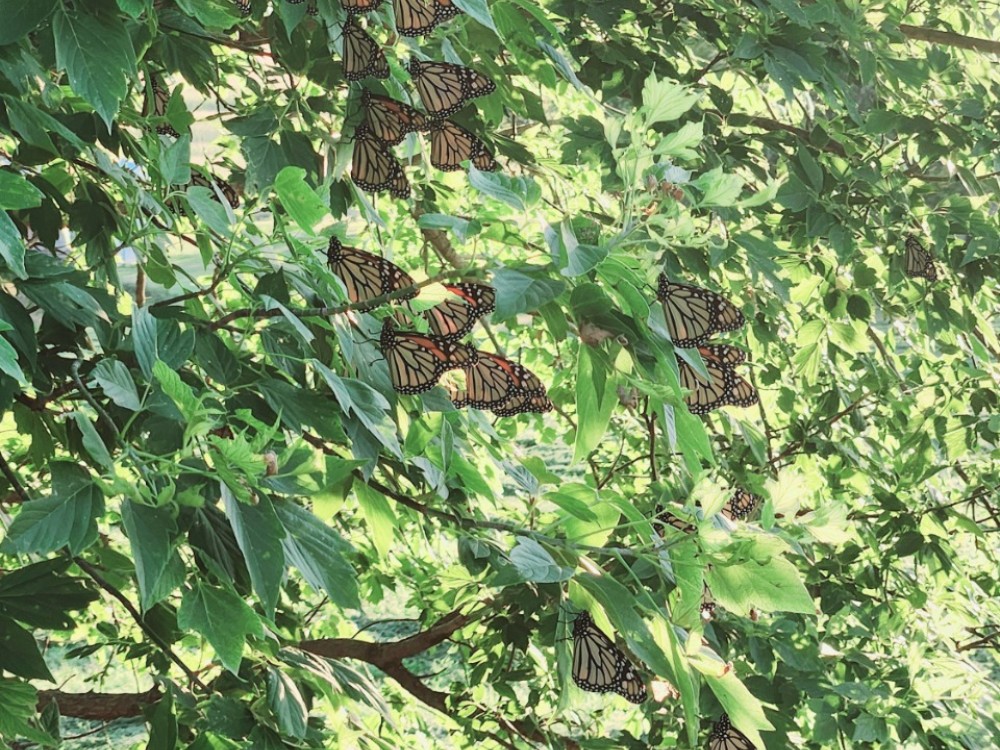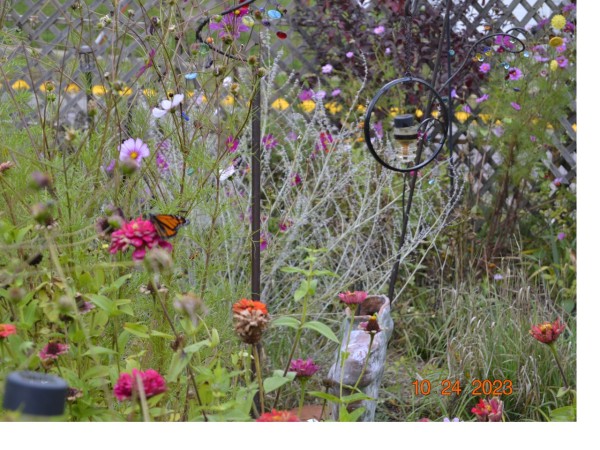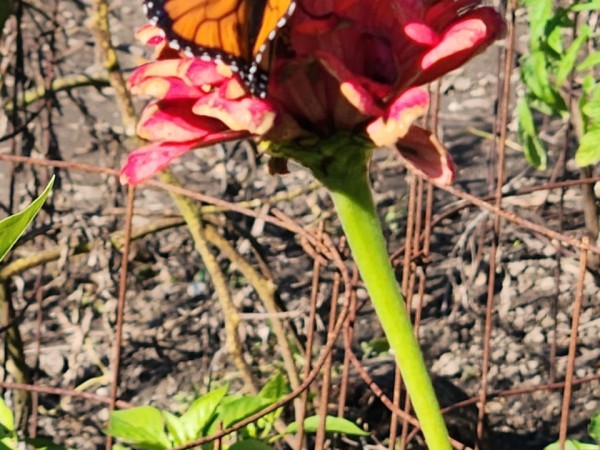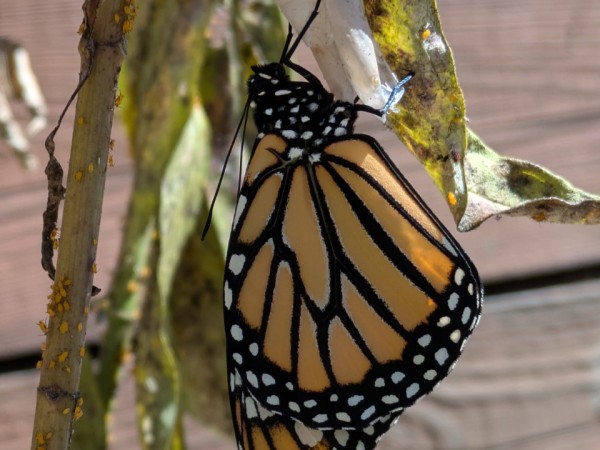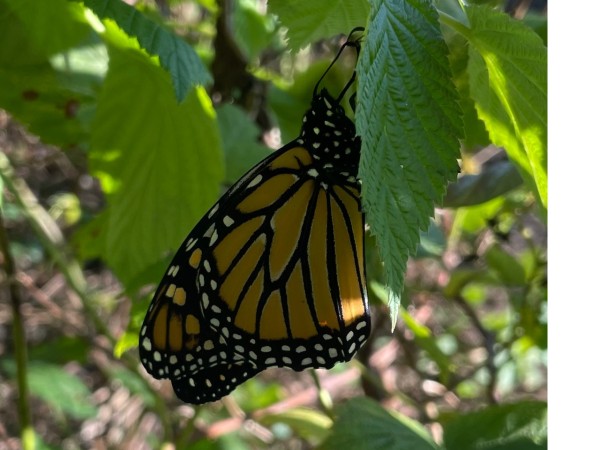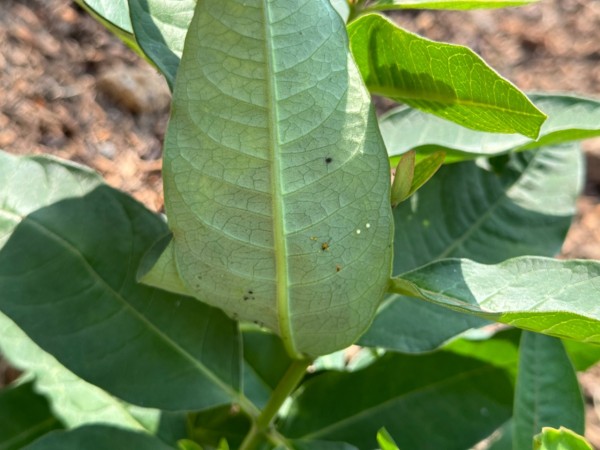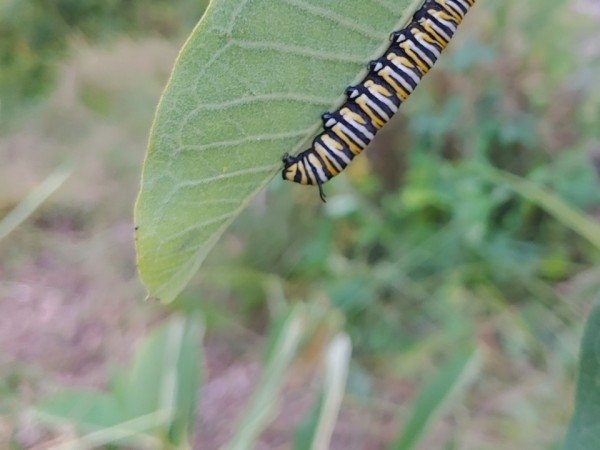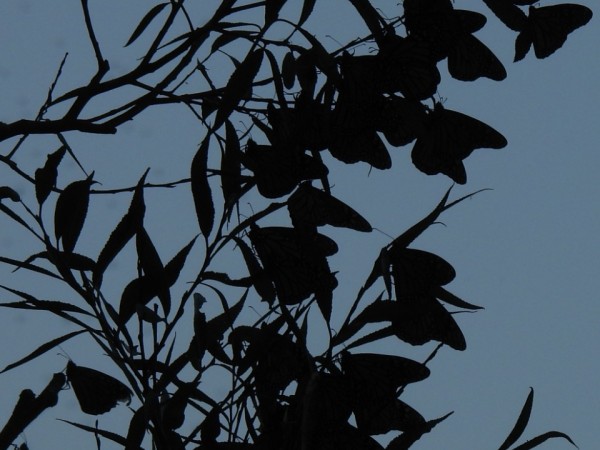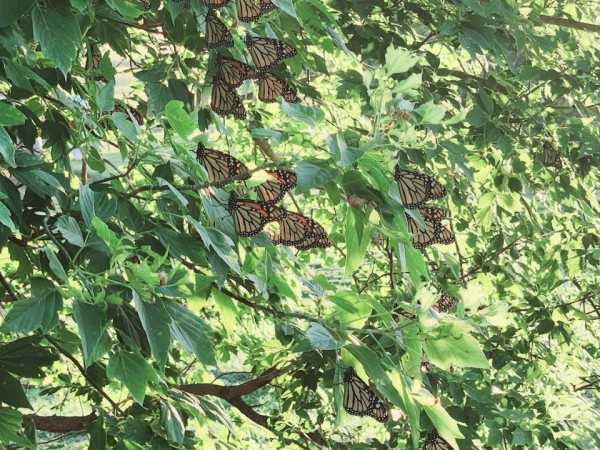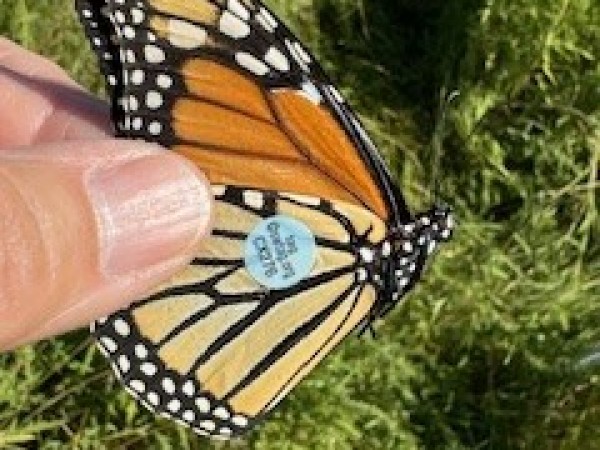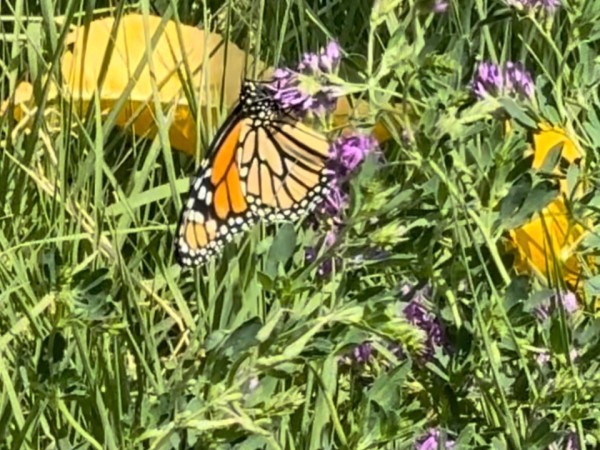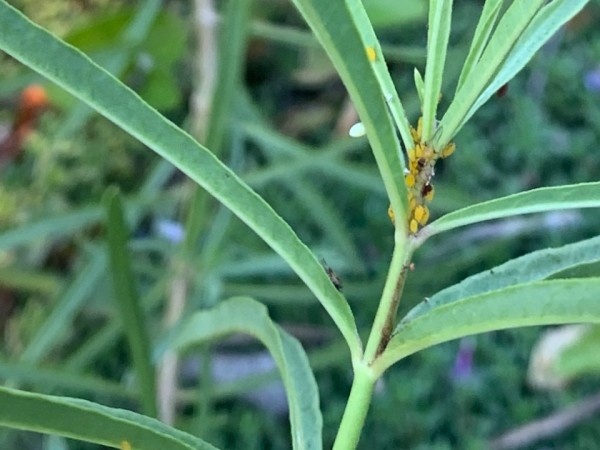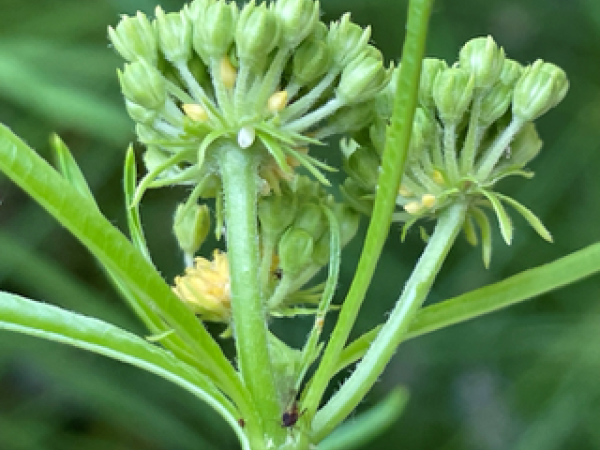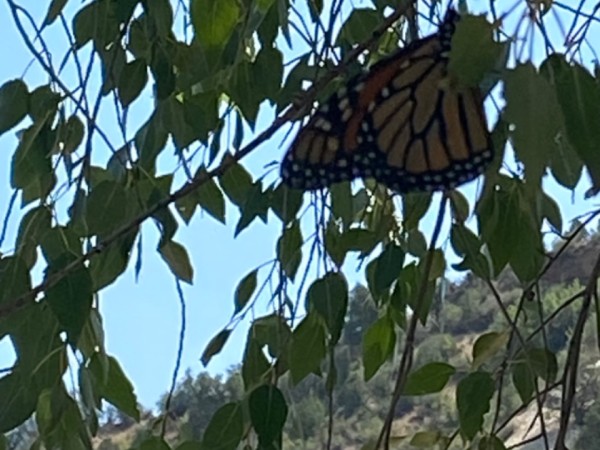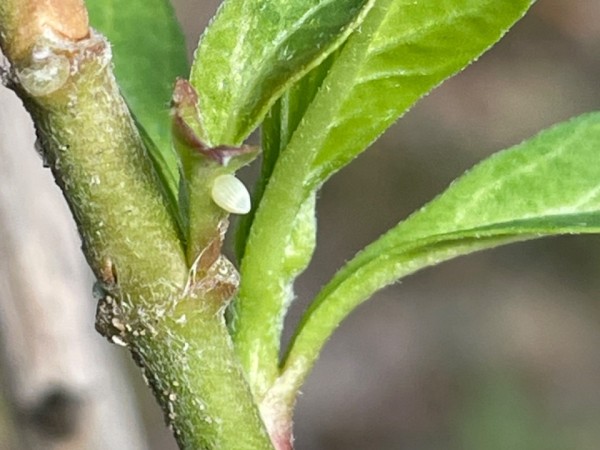Fall roosts pick up, northern egg sightings tail off
After a week outside of the country, I returned back to Wisconsin thinking that the last signs of summer -- including many of the monarch butterflies -- would have left without me, but upon my return, I spotted three monarchs in four days, one as far north as Peshtigo, Wisconsin (latitude 45).
Last year, Wisconsin’s final monarchs reported to Journey North were on Oct. 24, reported by Ruth in Portage and Tammy in Kenosha, so perhaps there’s more time than I thought, especially as 80-degree temperatures persist in the Upper Midwest.
I’m not the only one seeing northern monarchs. In South Abington Township, Pennsylvania, Katie photographed an adult male monarch emerging from its chrysalis on a swamp milkweed plant on Sept. 10. Julie in Mariaville Lake, New York reported one on the same day near an empty chrysalis.
In our last report, some in northern locations were still seeing eggs, but those reports have mostly dried up over the past week. On Sept. 5, Anne in Milwaukee reported two monarch eggs, but since then, the northernmost egg report has come from Pam in Great Bend, Kansas.
In Cary, North Carolina, monarchs were still laying eggs in large numbers for Katie, who wrote, “Watched one female stop to lay eggs multiple times at each milkweed plant in our yard > 1 hour time frame. At least 30 eggs were laid, likely much more as we haven't looked at every milkweed. 8 were seen on this purple milkweed alone (1-3 under each leaf).”
Some larvae are still developing, running a race against the clock. Christi in Fairfax, Vermont has reported the northernmost larva sighting so far this week, a caterpillar on Sept. 10 from latitude 44.7.
On Sept. 8, Sue in Aitkin, Minnesota reported three caterpillars from latitude 46.4, writing, “I’m hoping this week's warmup will speed up their feeding so they can form a chrysalis before temps permanently fall.”
Karen Oberhauser, monarch biologist and the former director of the UW-Madison Arboretum, says that these monarchs, while taking off near the tail end of migration, will still have a chance of successfully migrating, though their chances will be lower than monarchs that left earlier.
Fall roost reports
Fall roost reports have also picked up recently, including one from Carol in Port Rowan, Ontario, who saw 50 in a tree as well as “another 50 in the vicinity, flying and nectaring on goldenrod” on Sept. 9. In Le Mars, Iowa, Kristina reported over 100 on Sept. 2.
Monarchs don't travel in flocks the way that birds do, but at night, they come together to form roosts, gathering just before dark. Some of these roosts contain only a few butterflies, while others may be too numerous to count. Most last for a night or two before monarchs then move on to their next stop.
One hypothesis for why monarchs gather like this is as an anti-predatory strategy, but there are still questions to be answered about roosting behavior. What we do know is that monarchs' roosting behavior can help show their path south, and you can help scientists track them!
Please consider submitting a report if you're lucky enough to see a fall roost. But before submitting your report, don't forget to stop and take it all in!
How do hurricanes affect monarchs?
As monarchs move south, Hurricane Francine is moving north, expected to make landfall on Wednesday in Louisiana, with remnants expected in parts of Mississippi, Arkansas and Tennessee.
Above all else, we’re thinking of everyone in the path of the storm. Stay safe!
Monarchs can also be affected by hurricanes. In 2005, a monarch was tagged in Ohio, just a few days before Hurricane Katrina. Just a week later, at a time it should have been moving south, the monarch was found 165 miles northeast, in Ontario.
On a few occasions, monarchs have been seen in England after strong storms, such as in September of 1999, when a monarch and nighthawk were seen in England, or September 2012, after Hurricane Isaac, when hundreds of wildlife enthusiasts flocked to Portland Bird Observatory to see a monarch that many believe was blown across the Atlantic by the storm.
Caterpillars have also been reported vacating milkweed leaves and burying themselves in leaf litter to wait out a storm, reemerging after the storms pass. Adults will cling to plants to avoid being swept away by strong winds, attempting to wait out the storms.
News from the West
Gail Morris, coordinator of the Southwest Monarch Study, has also provided an update on western monarchs:
The fall migration season begins! Last-generation immature monarchs are nestled in fields across the northern portion of the West. Soon, when they enclose, they’ll join others already on their way to the coast of California (or even Mexico from Arizona and possibly Utah). But a late-season heat wave has been sizzling the Southwest this past week melting previous record highs and even creating new “high low” temperatures in some areas. With La Niña conditions dominating, temperatures are forecast to be warm throughout the Fall migration in the southern range where monarchs overwinter. Your sightings will help us learn more about the “heat effect” on the monarch’s last generation and their migration.
Recent monarch sightings
Maps start empty as we begin this important season and we need your help to fill them. Post your sightings of any stage of monarchs – adults, eggs, and larvae and include as much detail as you can. A photo is great to add if you have one, as even a blurry one helps everyone verify your sighting.
From the field
What is happening in the field around the West? Let’s get an idea of the big picture.
Dr. David James, Washington State University, Washington:
“One month ago, things were looking very rosy in the PNW [Pacific Northwest] monarch world with an 82% increase in sightings during June and July compared to the same months in 2023. Sadly, things are now not so rosy if the number of reported sightings are a good barometer of what’s happening out there (and they have been in the past few years). During August 2023 there were 172 confirmed monarch sightings in the PNW. This year, there have only been 108 and most of these (80%) were in the first two weeks.” There is even a bigger cause of concern. “NO monarch sightings posted in Oregon, Washington, Idaho or British Columbia since August 12-17. This is concerning because the second half of August into September is when the third PNW-bred generation should be emerging and migrating. There is still time for sightings to pick up and hopefully they will.”
We followed up with Dr. James 10 days later - is there any hopeful good news now to share? “There hasn’t been any observable change as far as I can tell. Very few being reported up here…at this time when we should be seeing migrants along the rivers as we have for the past few years and reported. Temperatures during August have been average to above average so we cannot blame cool weather for delaying things. The next three weeks will be critical.”
Journey North has received one report of an adult monarch from the Pacific Northwest since August 17, from Jessica in Goldendale, Washington on Sept. 1, as well as an egg report from Julie in Medford, Oregon on Sept. 2.
"Monarch butterfly sighted briefly earlier in the day- found 21 eggs when I checked the milkweed that evening," Julie wrote.
Rachel Taylor, Salt Lake City, Utah:
Rachel reached out to a group of monarch enthusiasts around the state of Utah and asked their opinion of this year’s monarch population in the state in comparison to last year. "Two-thirds of the group say they are seeing less than in 2023. We have 24 out of 29 counties checked off with the annual monarch photo contest, with the counties of Juab, Grand, Beaver, Piute, Garfield remaining.
Rachel visited a volunteer in Salt Lake City recently. “She had 2-3 monarchs fluttering around her amazing pollinator habitat, feeding on various flowers and laying eggs on A. fascicularis.”
Kristy Brauch, Pasadena, California:
Kristy pulled up data and observations to share from the “Monarch Monitoring Team Observations in Los Angeles County, California: Challenges and Insights from 2024 Breeding Surveys.”
“California’s 177 ecoregions, which include over 300 monarch overwintering sites, present challenges for tracking monarch populations. Urban areas with abundant Asclepias currassavica complicate data collection, as they often support year-round monarch activity. Our team contributes to data collection through weekly Monarch Larva Monitoring Project counts in Pasadena and other sites on Asclepias fascicularis and Asclepias linaria. In 2024, monarchs were first observed in June, with significant breeding activity continuing into August. However, larval stages remained predominantly first and second instars, with few third instars observed. By late August, a decline in all stages of larvae was noted, with extreme heat in September reducing monarch activity to its lowest level. The few fourth instars showed signs of predation by tachinid flies. This pattern mirrors previous years, but weather conditions have worsened the decline. We aim to tag migrating monarchs under the Southwest Monarch Study permit, tracking their journey to overwintering sites and their spring return. For now, we watch and wait.”
Arizona:
Summer was hopeful at first with monarchs reported in Prescott, the Grand Canyon, Flagstaff, Mormon Lake, Pine, Payson, and the White Mountains. But record-breaking heat blazed through many parts of the state for a prolonged period several times throughout the summer.
Last weekend, I drove down to Canelo and Sierra Vista in Southeast Arizona, normally the most concentrated locations of breeding monarchs and migrators in early September. Usually, we can easily tag 20 monarchs this time of year but instead, SWMS tagging trips only tagged two and I found two pristine monarchs to tag a few days later. None were seen along the San Pedro River. Habitat isn’t an issue this year with an incredible number of native sunflowers lining highways throughout the region as well as native Graham's thistles in bloom. While other butterfly species abounded, monarchs were only seen in small numbers. Maybe things will change in the coming weeks – there is still time. But now the question arises, where are the monarchs?
New permit to tag and monitor monarchs in California
Kristy mentioned the Southwest Monarch Study's new permit through CDFW. Our permit has two tiers: Tier 1 is tagging monarchs only and Tier 2 is monitoring monarchs following MLMP Activity 3 protocols. The number of people who can participate is limited but hopefully, the enthusiasm we have seen in our required training sessions will open a new chapter of understanding monarch adaptation to changing conditions in California. Stay tuned!
Wanted: your monarch sightings
We need your monarch sightings! Report adult monarchs, eggs or larvae to Journey North. Your detailed description of what you see can include, but is not limited to, the monarch’s gender and activity. If known, include the type of flowers if they are nectaring or milkweed type if laying eggs. Photos are encouraged and welcomed with all your reports.
Gail Morris is the Coordinator of the Southwest Monarch Study (www.swmonarchs.org). She is also a Monarch Watch Conservation Specialist, the Vice President of the Central Arizona Butterfly Association and sits in several Western working groups. The Western Monarch News is based on comments provided to Gail Morris. We hope to increase the number of sightings and therefore photos and comments entered into Journey North. We rely on the volunteers who communicate regularly with Gail and who agree to participate in our effort to increase awareness of the population of western Monarchs. You can reach her at gail@swmonarchs.org

